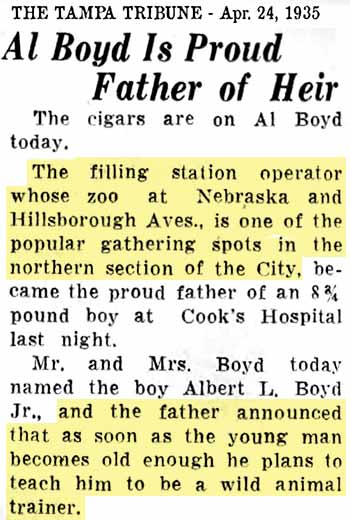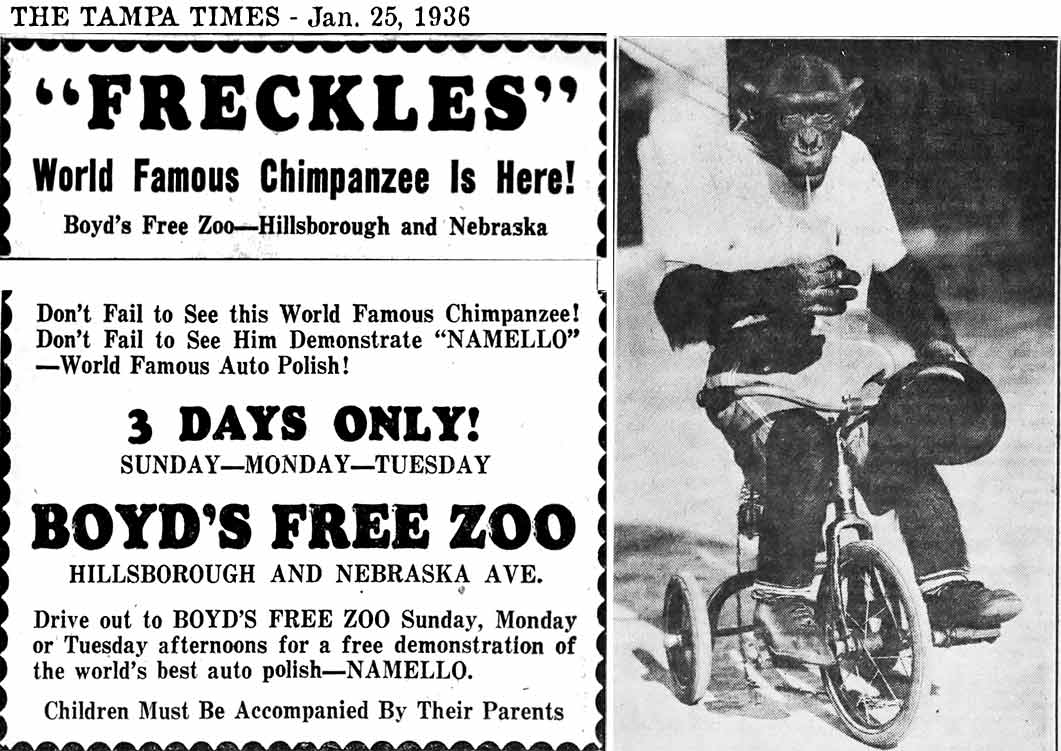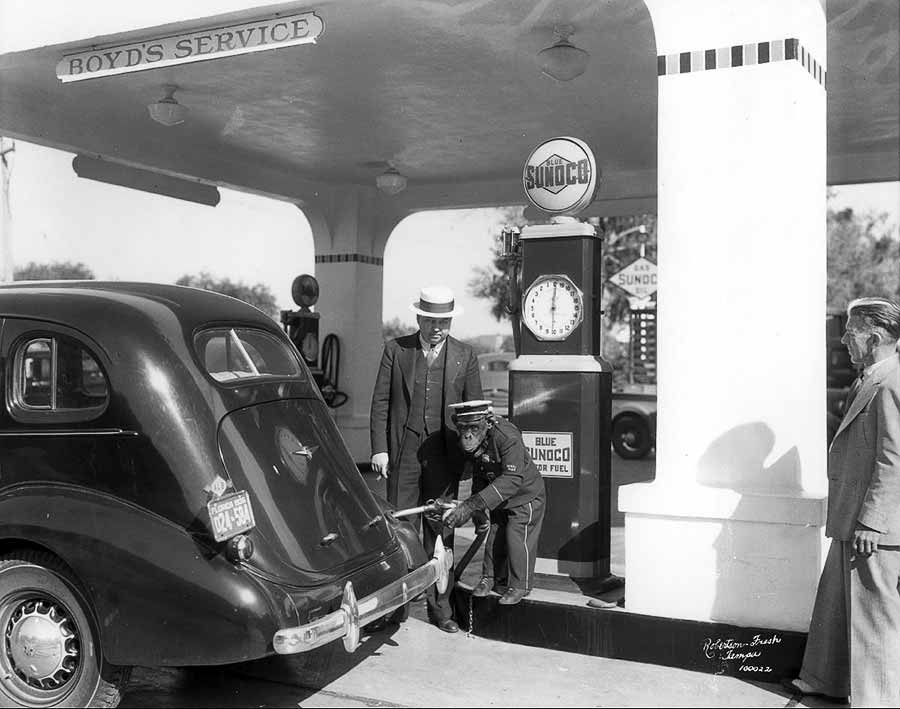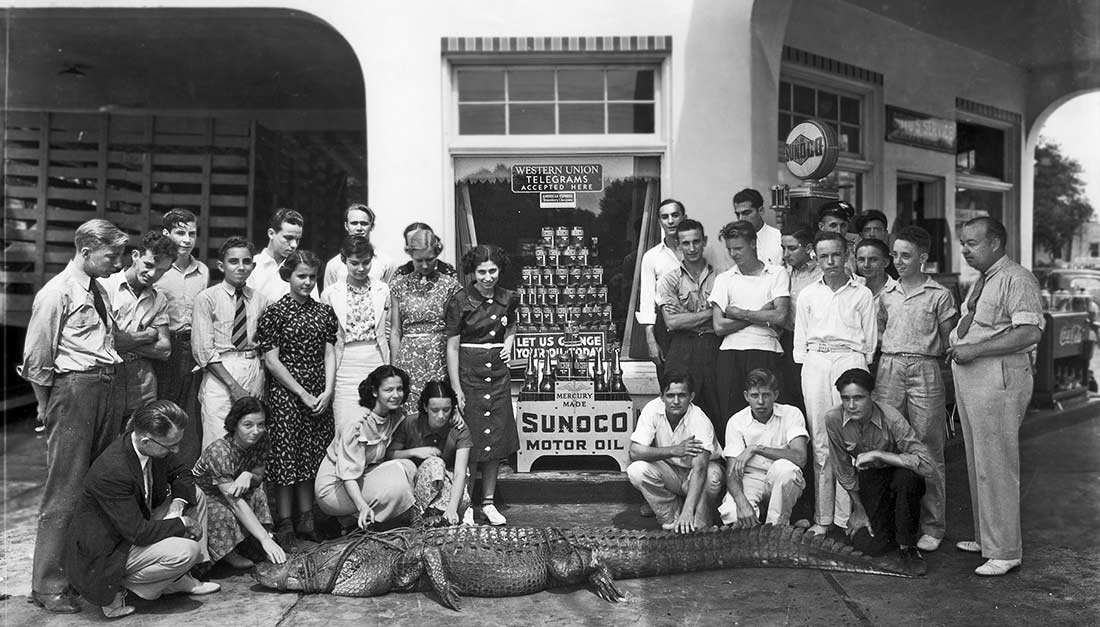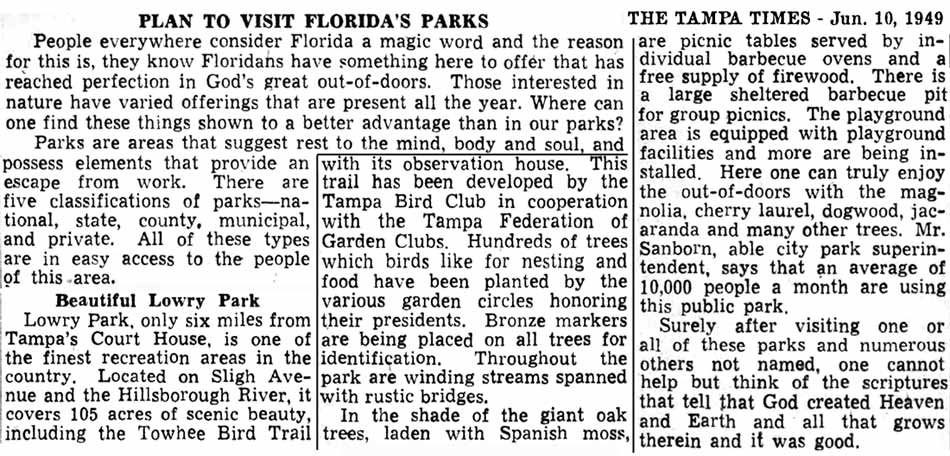|
This page is in process of being created. |
|||||||||||||||||||
SO THE STORY GOES... "Tampa's zoo began around 1937 as an animal shelter in Plant Park on the banks of the Hillsborough River near downtown. It was started by city employees and originally consisted of a small collection of indigenous animals such as raccoons, alligators and an aviary with a variety of exotic birds."
The entrance to Plant Park with the University of Tampa in the background, Sept. 5, 1936. Burgert Bros. photo from the Tampa-Hillsborough County Public Library digital collection.
Three women looking at an alligator from a foot bridge in Plant Park, Sept. 11, 1936. Burgert Bros. photo from the Tampa-Hillsborough County Public Library digital collection
AND THE REST OF THE STORY GOES: "As the zoo collection at Plant Park had grown, the animals were moved during the term of Mayor Nick Nuccio to the more centrally located Lowry park in 1957 where it was maintained by Tampa's Parks Department." BUT DID THAT REALLY HAPPEN?
|
|||||||||||||||||||
|
In the years when any place with a caged animal called itself a zoo, zoos abounded in Florida, with alligators being the main attraction. Gators were big business in Florida; they were on display at just about every roadside citrus stand in the state. Not only could you see them, you could buy them too. The "zoo" at Sulphur Springs in the 1910s to 1920s was no exception, except for the fact that C.M. Stokes had a gator show with "educated alligators" and a "complete line of alligator goods" as well as snakes. From J. D. (Doug) Porter's blog, Nov. 7, 2019 "Good size zoo for the City of Tampa."
Stokes claims to have handled snakes for over 20 years, and that he "solved the ancient controversy" as to which snakes lay eggs or give live birth. He's concluded that non-poisonous snakes lay eggs, while poisonous ones give live birth.
Handling snakes for over 20 years didn't make Stokes much of an expert on them, because his "solution to the ancient mystery" is incorrect and oversimplified at best. Hopefully, he didn't use this as a guide for handling them. Regarding birth, there are 3 types of snakes: some give birth to live young, while others lay eggs. The 3rd class of snakes develop eggs inside their bodies, but hatch them inside, retaining the shell and giving birth to live young. There are poisonous and non-poisonous snakes that give birth to live young. See Which Snakes Lay Eggs, and Which Give Birth to Live Young? by Brandon Cornett.
STOKES WANTS TO MOVE HIS ZOO TO PLANT PARK
In April 1915, Stokes asked the City’s Board of Public Works for permission to move his animals downtown to Plant Park and open a free zoo. The Board appointed Commissioner Clarkson to visit the zoo and estimate the worth of the animals. The result would depend largely on the report of Clarkson.
Mrs. Metcalfe, who was a promoter of educational work for children, urged the BPW to take Mr. Stokes' offer of moving his zoo to Park, for the education of school children and entertainment of visitors. But Mr. Stokes' plan involved more than just moving his animals and starting a free zoo. He wanted the privilege of operating a restaurant and a post card stand at the park. Also, he apparently expected the City to buy his animals, as Commissioner Clarkson's written report of his findings stated he did not think the city was in a position to buy the animals because Mr. Stokes' valuation was high, but he did agree the exhibit would be welcomed by the public. He also thought the variety of animals was insufficient to be worthy of the city.
Commissioner Henry Snow agreed that Tampa should have a "creditable zoological garden" but the city could not do so this year as there was no appropriation in the current budget for this purpose. (At this time, old City Hall built in 1890 had just been demolished, the new police headquarters had been built, and construction was starting on the new City Hall in place of the old one, all at the cost of just under $300,000.)
A new budget would be made up in June and the matter further considered. Commissioner Henderson also favored such an attraction, and the use of a small island at the foot of Plant Ave. to be used as a public park and playground.
Apparently, enthusiasm for the zoo faded as there was no further discussion about it published from June to the end of the year. The BPW was kept busy with other matters such as the construction of the new City Hall.
But Stokes' alligator farm at Sulphur Springs continued to thrive well into the 1920s. The area would become Tampa's most popular tourist attraction and recreation site when Josiah Richardson built an amusement empire there. See more about Sulphur Springs at TampaPix.
|
|||||||||||||||||||
|
In November 1925, another zoo was in the news. Looks like Mr. Pleuss may have been running quite a "Hospitality House" there. Prohibition agents discovered a small illegal brewery with forty barrels and four vats of beer that were stored in a nearby barn. Pleuss was arrested, arraigned, and released on bail for trial in the Feb. term of the federal court in Tampa. Rumor was, the zoo was a great place to see pink elephants.
|
|||||||||||||||||||
|
THE FIRST ATTEMPT AT A
LOWRY PARK ZOO In August
1925, Dr. Lowry made his bid for re-election to the Board of City
Commissioners, entering the race for two available seats for five
candidates. Lowry laid out his platform...
|
|||||||||||||||||||
|
The next day, Lowry ran an ad which included his above comments as the narrative on the left, with the list seen below positioned in one long column on the right. It has been rearranged into three columns to make better use of space here. He first presents the fourteen points of his previous campaign platform, then proceeds to show how every one of them, except for the last one, have been accomplished are are in progress.
MONKEYS, TROPICAL BIRDS AND DEER PLANNED FOR LOWRY PARK
[MORE COMING] |
|||||||||||||||||||
|
The nucleus of what would become referred to as as the "Tampa City Zoo" or "Plant Park Zoo" "started by city employees" was started by Park Supt. Marco Penn who kept his pet bear and three gators at Plant Park in 1934. Below, Penn's daughter, Callie Mae Penn, is seen performing an acrobatic stunt on a giant lily pad at Lowry Park. Lowry Park was a botanical paradise in these years, but had no zoo.
In Feb. 1935, Mayor Chancey received a gift from the Mexican consul in Tampa. The Mexican tiger, as it was later called, was left on the mayor's doorstep while he was out on a hunting trip. The tiger was sent to a zoo located on Nebraska Ave. while Penn prepared a place for it at Plant Park.
In these years, Tampa's various garden clubs were very much involved with the upkeep and beautification of Tampa's parks. Along with the Parks Dept., they maintained the attractive landscaping at municipal buildings such as the county courthouse downtown.
This article mentions two otters, three alligators, two ant eaters, a small bear and a big black bear, and the Mexican tiger. These weren't necessarily how many of each there were in the zoo, but more likely just the ones the reporter was able to see.
TEXAS HORNED TOAD ADDED TO THE ZOO--BRIEFLY In late May 1936, Mayor Chancey received a horned toad from Texas with an invitation to attend the Texas Centennial exposition which was to open on June 6. The toad arrived in a small cardboard box and was sent to Marco Penn to feed. Penn gave it to Ben T. Sanborn, a clerk at the park department headquarters, with instructions to take him home and feed him some ants. But Sanborn's wife didn't want it there, so he tied it up in his back yard to feed on ants. Sanborn brought him back to the park office at Plant Park, in the original box, where he was kept while a worker was building a cage for him in the zoo.
The next
day, the toad was gone. The cage was found empty and the
Tribune played it up as a "Toadnaping." The cage was made
without a bottom and apparently a lid which was not secured, so the
toad probably hopped, knocked the lid off and escaped.
The tourist center at Plant Park,
which also served as the park office where the horned toad was first kept. THE ZOO ACQUIRES FRED P. CONE In late June 1936, the zoo at Plant Park received a 12-foot long, 600 lb. gator which was captured by two supporters of Fred Cone for governor. Naturally, it was to be named "Fred P. Cone" because "they are both original Floridians." Unfortunately, a week later, Fred was dead. The gator, that is.
|
|||||||||||||||||||

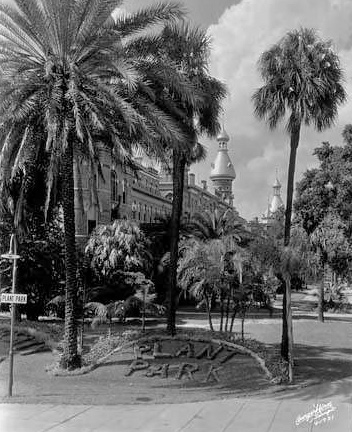
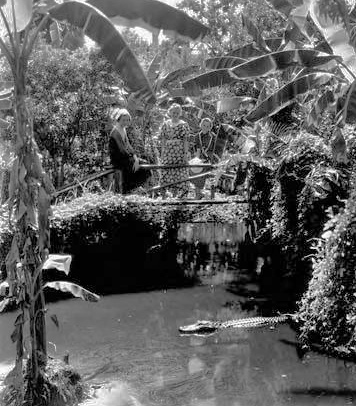
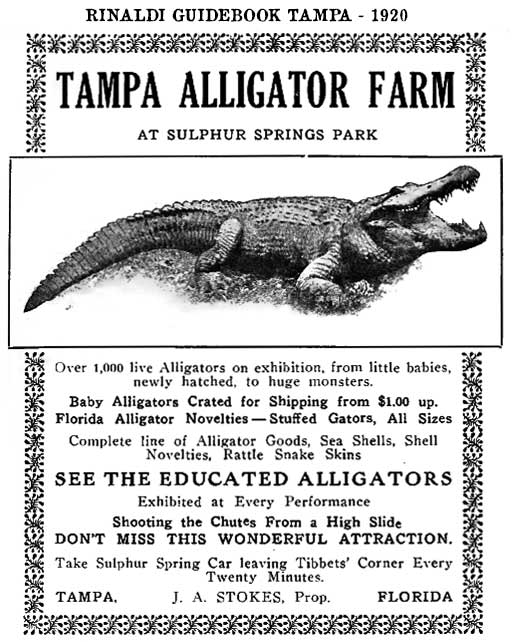
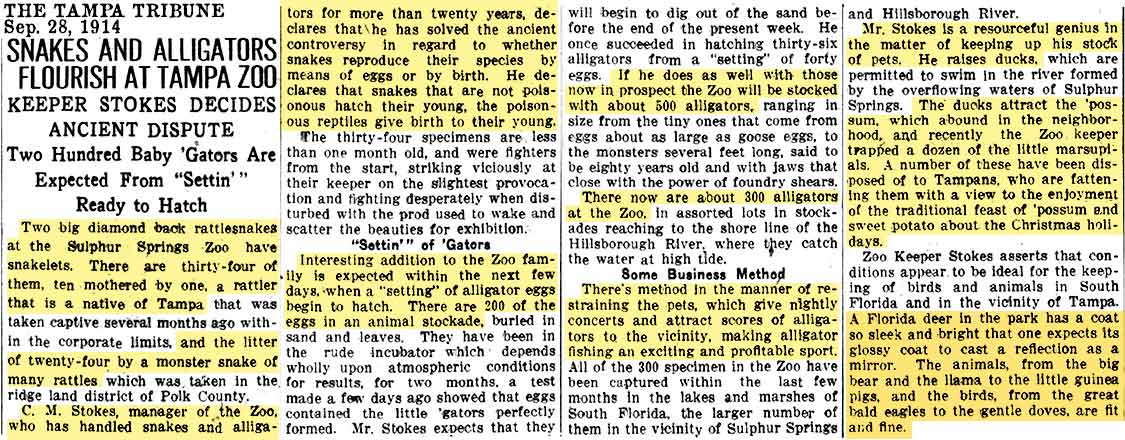
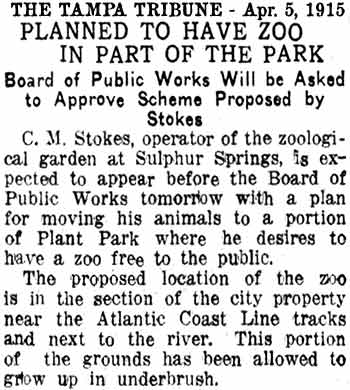
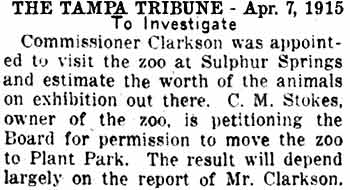

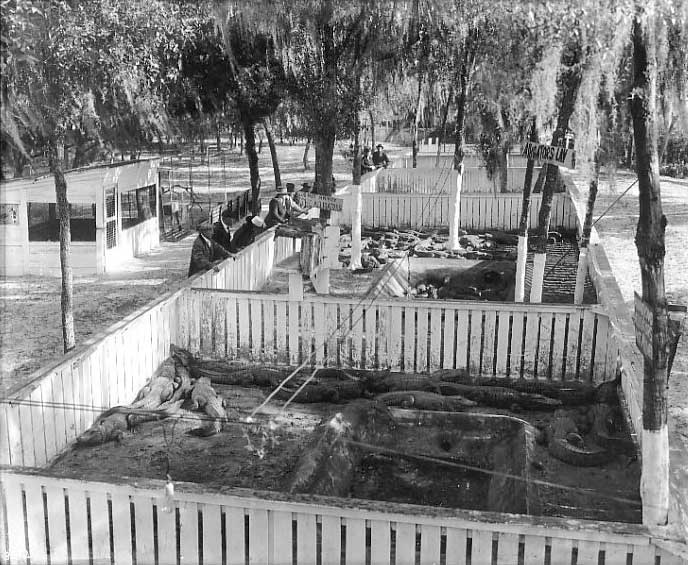
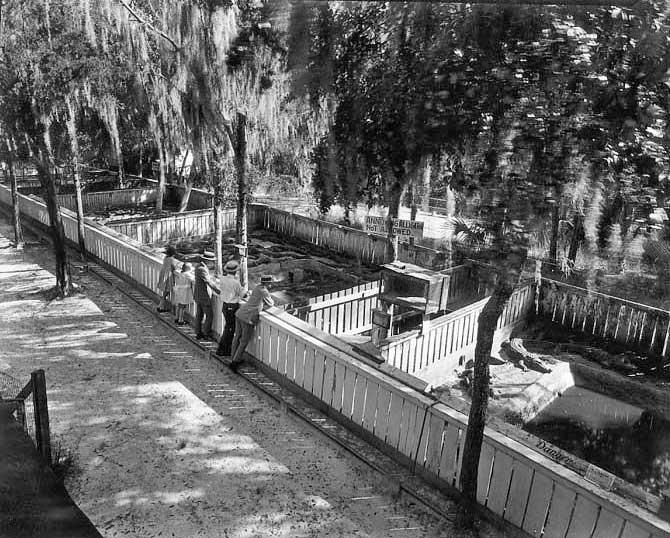
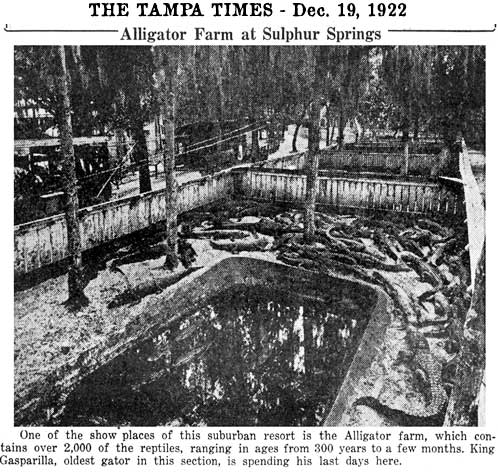
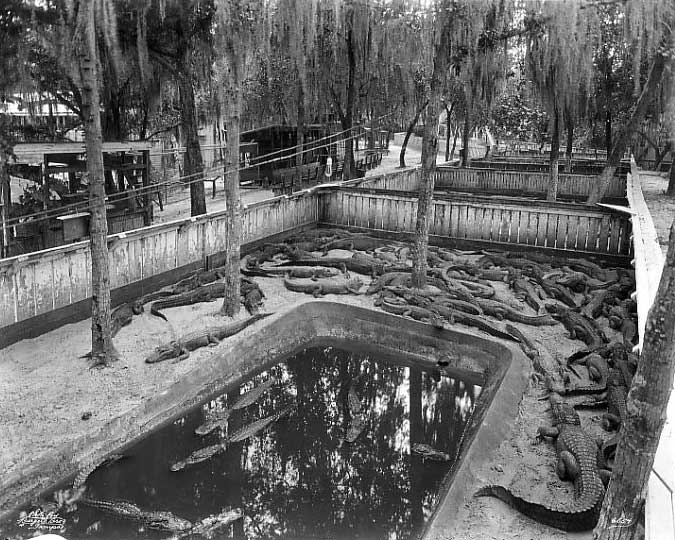
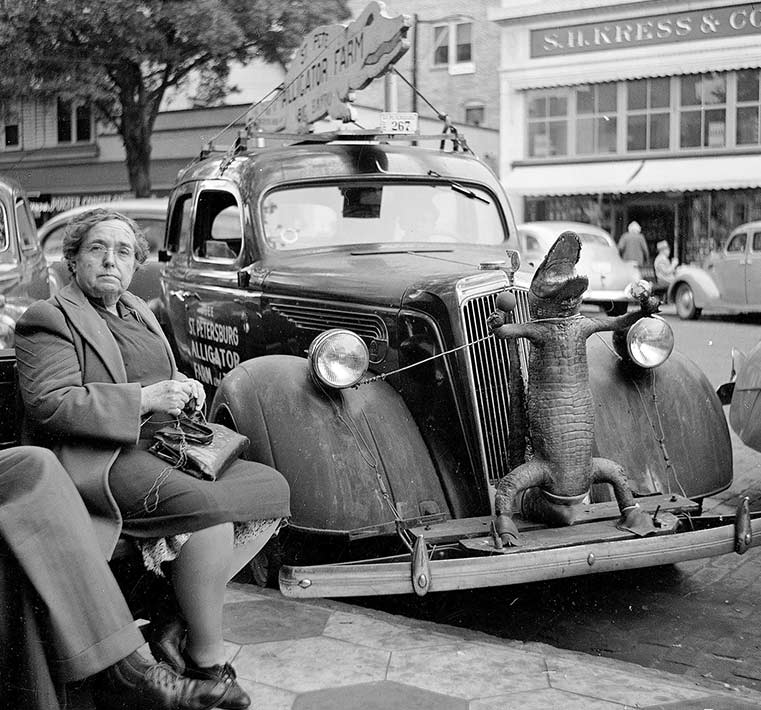
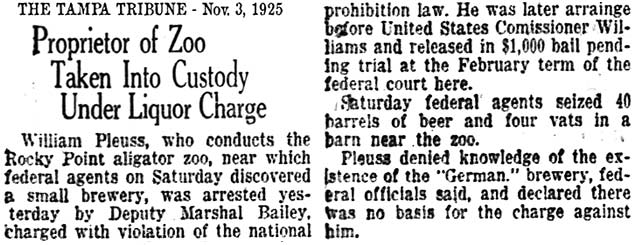
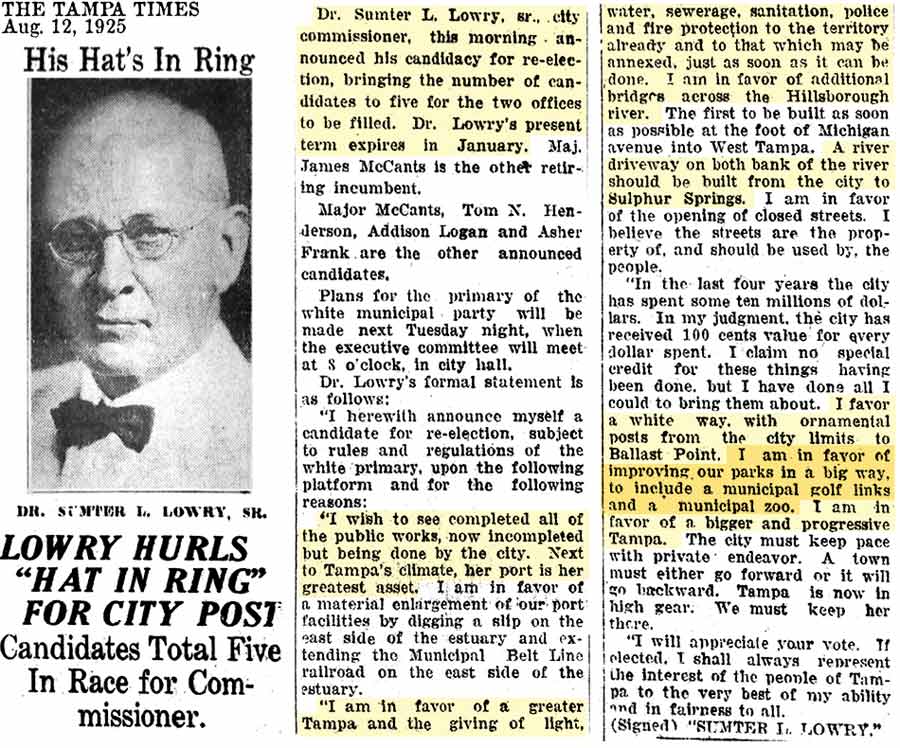
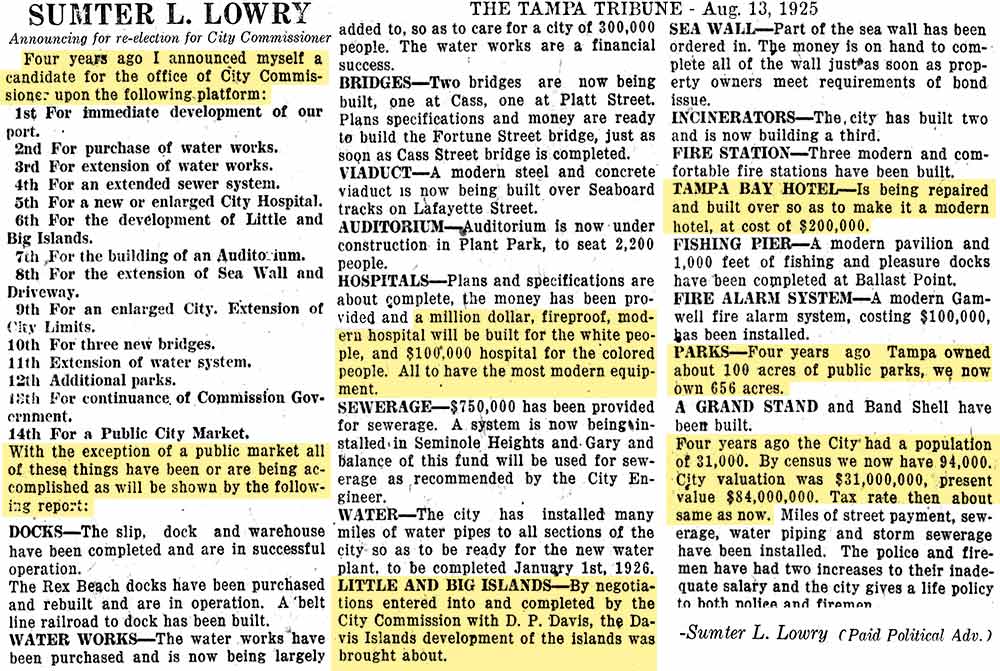
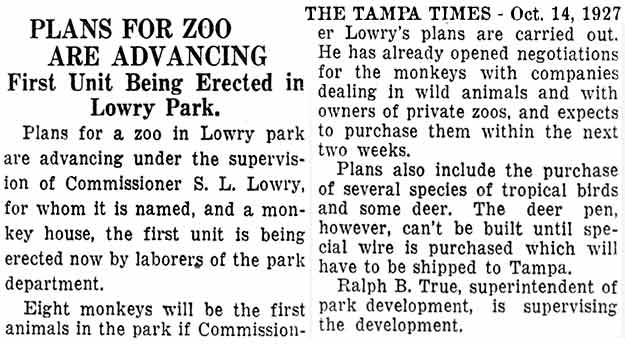
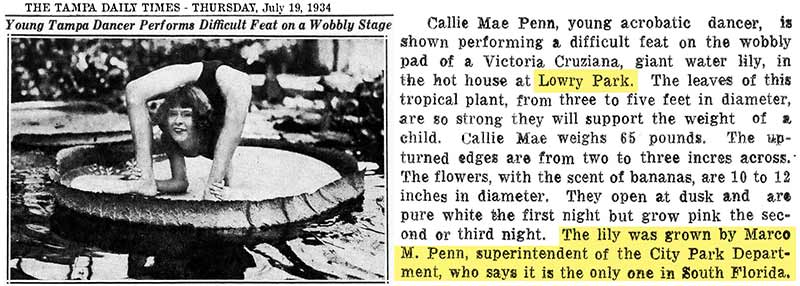








 The
"Mexican ant bears" were not bears at all, but if they
were anteaters, they would have been either northern or southern Tamandua, two species anteaters that live in
grassland and forest of southeastern Mexico to northern South
America. The mexicana
tamanduas anteater much smaller than giant anteaters. They
have a prehensile tail, small eyes and ears, and a long snout.
The fur is pale yellow over most of the body, with a distinctive
patch of black fur over the flanks, back, and shoulders, that
somewhat resembles a vest in shape. The presence of this color
pattern makes it possible to distinguish this species from its
southern relative, which has a more uniform color. The
tail has fur on its upper surface for about a third of its
length, but is otherwise hairless. The hind feet have five toes,
while the fore feet have only four. Males and females are
similar in size and color, and range from 40 to 51 inches in
total length, including the 16 to 27 inch tail. Adults weigh
between 7 to 12 lobs.
The
"Mexican ant bears" were not bears at all, but if they
were anteaters, they would have been either northern or southern Tamandua, two species anteaters that live in
grassland and forest of southeastern Mexico to northern South
America. The mexicana
tamanduas anteater much smaller than giant anteaters. They
have a prehensile tail, small eyes and ears, and a long snout.
The fur is pale yellow over most of the body, with a distinctive
patch of black fur over the flanks, back, and shoulders, that
somewhat resembles a vest in shape. The presence of this color
pattern makes it possible to distinguish this species from its
southern relative, which has a more uniform color. The
tail has fur on its upper surface for about a third of its
length, but is otherwise hairless. The hind feet have five toes,
while the fore feet have only four. Males and females are
similar in size and color, and range from 40 to 51 inches in
total length, including the 16 to 27 inch tail. Adults weigh
between 7 to 12 lobs.
